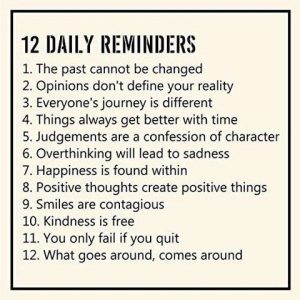Social media is a great thing. It’s a very clever use of technology which allows us to connect with a wide circle of people in many different locations all over the world. It’s a great way to get news, updates, and personalised information that you ordinarily wouldn’t get. However, there is a limit to its usefulness. Examples abound of how it can be damaging and become quite addictive. In fact, it’s a bit like an inverted U-shaped curve in the sense that it’s good up to a point, there is an ideal ‘high’ point or sweet spot, but then it becomes unhelpful. The question is one of balance and freedom (detachment): how to make the most of it and get all the good aspects, and also how to recognise when it starts to become unhelpful and harmful. In this way we can be aware of its effects, harness its power and usefulness, and hopefully avoid the downsides.
The key thing is recognising the point, at the top of the curve, where things start to drift off. For this we need some level of reflection – that is, a timeout and the ability to look back or reflect on our experience. The only way to recognize what is good is by being able to read the signals from within ourselves. The amazing thing is that our bodies, God-created, realise when things are going well, when things are in balance, and equally when they are getting out of hand. On the negative side, there’s a sense of overextension, an uneasy sense of addiction or of compulsion that is not good. The thing is, the signals are always there if we are able to read them.
There is a useful wisdom bt St. Ignatius of Loyola that can help. While recuperating from a serious injury, he noticed that bad things were initially enticing and exciting but afterwards left him empty and sad, while good things were consoling and this lasted over time. It was on looking back or reflecting on his experiences that he was able to distinguish the two types, one good (life-giving) and one bad (life-draining). Then he set about training himself to notice them sooner, to differentiate them in terms of how they made him feel inside, avoiding the bad ones and following the good ones. In this way he turned his life around from being superficial and arrogant to being fully alive and devoted to helping others. He would have said: “Watch for those experiences that, though initially exciting and pleasurable, bring you to a bad place. Get tuned in and aware, and work your way to feeling better, connecting with others and making your life mean something.”
The key thing is getting some distance – sitting back from the screen and asking ‘How is this impacting me, how do I feel inside?’ Ignatius recommended doing a review of feelings and moods once a day, creating a space where you can look back and see how you are being affected. Here is a simple method:
- Give thanks for all the good things in your life (beware of negativity)
- Ask for help or light from a higher power (connect to the ‘grid’)
- Look back honsetly at your experience online
- Separate good (life giving) and bad (deadening) moments; don’t beat yourself up
- Try to change to get more balance
Often it can be helpful to make some decisions in advance about social media and about how we’re going to use it. That means there are times when we will find it helpful to use it and other times where can be too intrusive. First thing in the morning and last thing at night are important ‘transition’ moments, in and out of sleep and in and out of consciousness. So, we need to protect these ‘sensitive’ moments when we are open to all sorts of influences, need to be wise about what we put into our subconscious. Equally, these are good moments to meditate, pray or reflect, as ways of keeping positive. Also, in order to show our freedom in relation to it, it’s important to be able to take a break from social media completely, whether that’s a day, a weekend or a week. Just simply notice what is going on in your experience and amazing things can happen. You are worth it!

